Trail Location 20: South Fairmount's Industrial Roots
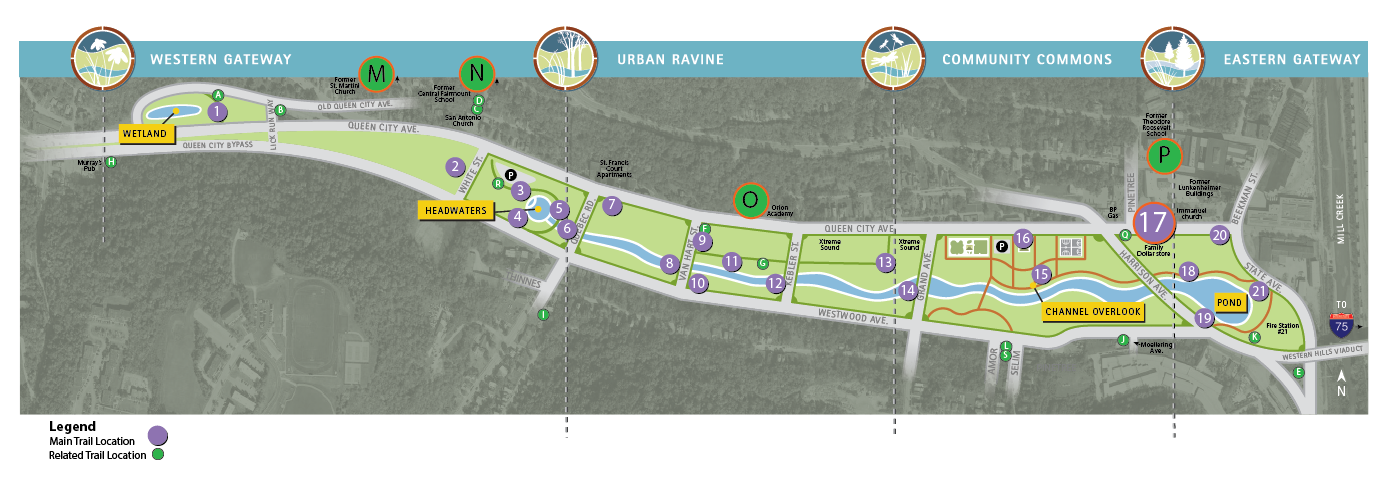
Walking Tour? VIEW THE TRAIL LOCATION IN GOOGLE MAPS >
The Industrial Roots trail location includes a main stop at Trail Location 20 and three related stops:
- TRAIL LOCATION 20: SOUTH FAIRMOUNT'S INDUSTRIAL ROOTS >
- TRAIL LOCATION Q: MANSION TURNED HOSPITAL >
- TRAIL LOCATION R: CURLED HAIR FACTORY >
- TRAIL LOCATION S: FAIRMOUNT DAIRIES >
TRAIL LOCATION 20: SOUTH FAIRMOUNT'S INDUSTRIAL ROOTS
In 1851, the Cincinnati, Hamilton, & Dayton Railroad was the first to provide commuter service from the west side of Mill Creek into the City of Cincinnati. In the hope of attracting new residents to the area, investors divided large plots of land along the railroad tracks. Initially, the investors marketed the plots to upper-income families wanting to live away from the city’s bustle but close enough for daily commuting. However, the hilly landscape proved to be too rugged.
Instead, the land was sold to new industries that planted the first seeds of development in South Fairmount (known as Fairmount until the 1920s). Among the first to establish a presence in the area was the Philadelphia Brewery, later known as the Herancourt Brewery, and the Fairmount Woolen Mills owned by The Adler Co. These and other burgeoning industries attracted droves of working-class employees and their families to settle in Fairmount.
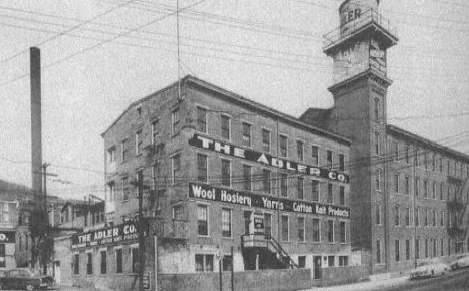
The late 19th and early 20th centuries unleashed a second wave of industrial and manufacturing interests. Businesses looking to escape the crowded and older parts of downtown Cincinnati flocked to larger sites along State, Westwood, and Queen City avenues. Companies that established in Fairmount during this time included the Lunkenheimer Valve Company along Beekman Street, the P.R. Mitchell bristle manufacturing plant on Queen City Avenue, and the Fairmount Brewery on Westwood Avenue and Quebec Road. Smaller businesses, including lumber dealers, feed merchants, metal fabricators, foundries, textile mills, box factories, and oil refineries, also settled throughout the area and many supported the larger industries.
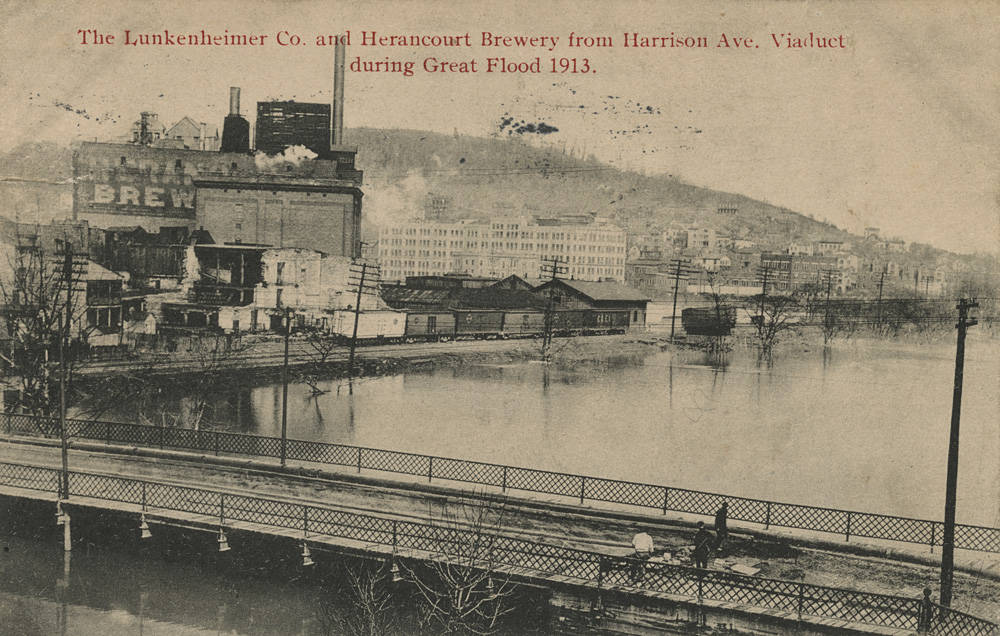
With the increase in industry, Fairmount’s working-class population continued to rise throughout the first half of the 20th century. The community also supported a booming, yet smaller, service industry made up of pharmacies, grocery stores, theaters, hardware stores, barber and clothing shops, saloons, and small restaurants, turning Fairmount into a vibrant, growing community through the end of World War II.
Lunkenheimer Valve Company
The Lunkenheimer Valve Company, originally known as Cincinnati Brass Works, was established in Fairmount around 1862, and grew to become one of the largest manufacturers of valves and lubricators in the world. Founded by German immigrant Frederick Lunkenheimer, the company operated out of a building complex located between Tremont Street and Waverly Avenue. It eventually expanded to include a brass foundry constructed in 1910 between Tremont Street and Queen City Avenue.
Cincinnati Brass Works quickly became one of Fairmount’s most important industries, employing 130 workers by the 1880s. In 1892, Frederick’s eldest son, Edmund, took charge of the company and renamed it the Lunkenheimer Valve Company. The Lunkenheimer family sold the company in the 1960s, but valves carrying the Lunkenheimer name continue to be produced. The South Fairmount foundry closed in 2017.
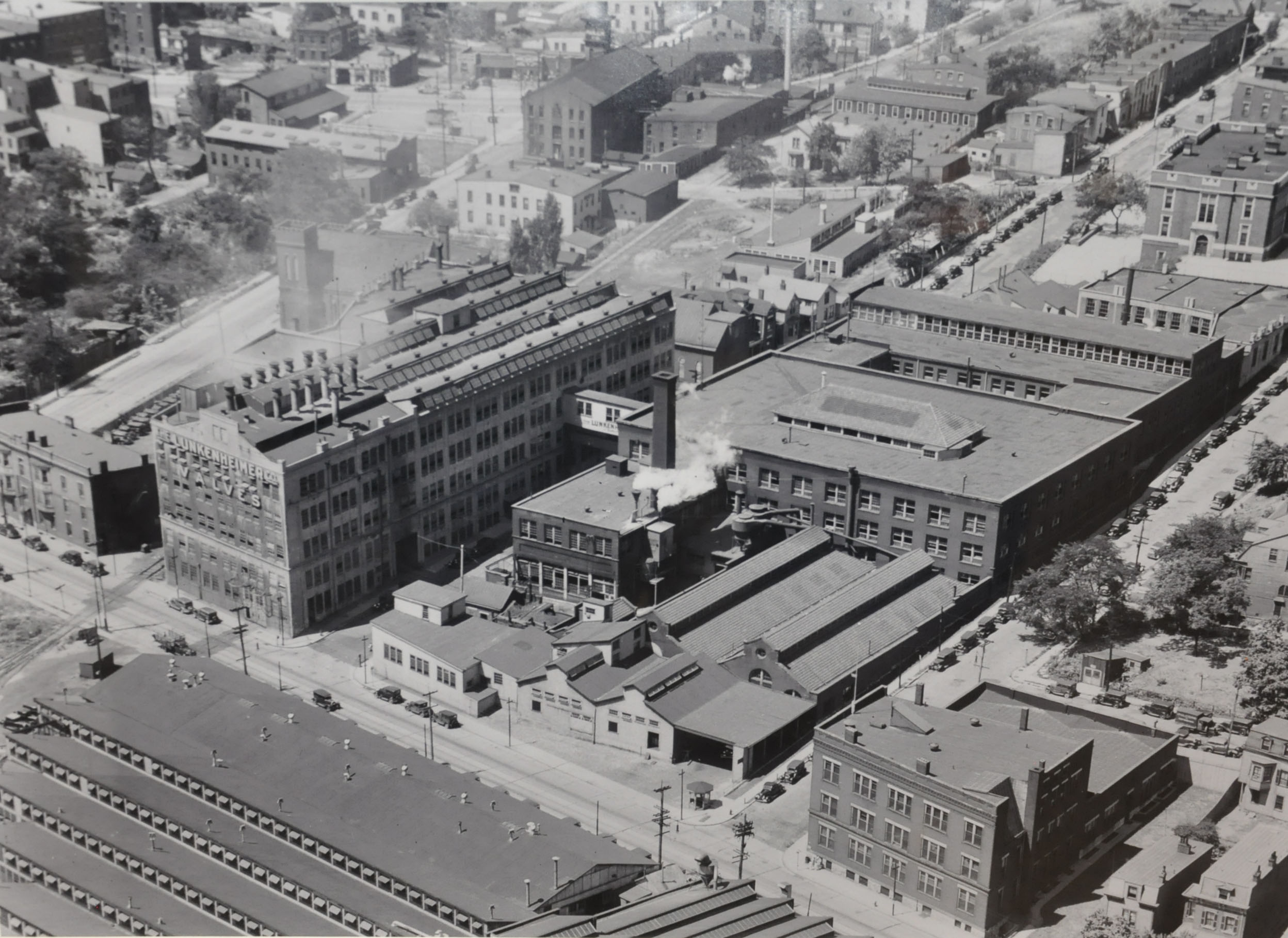
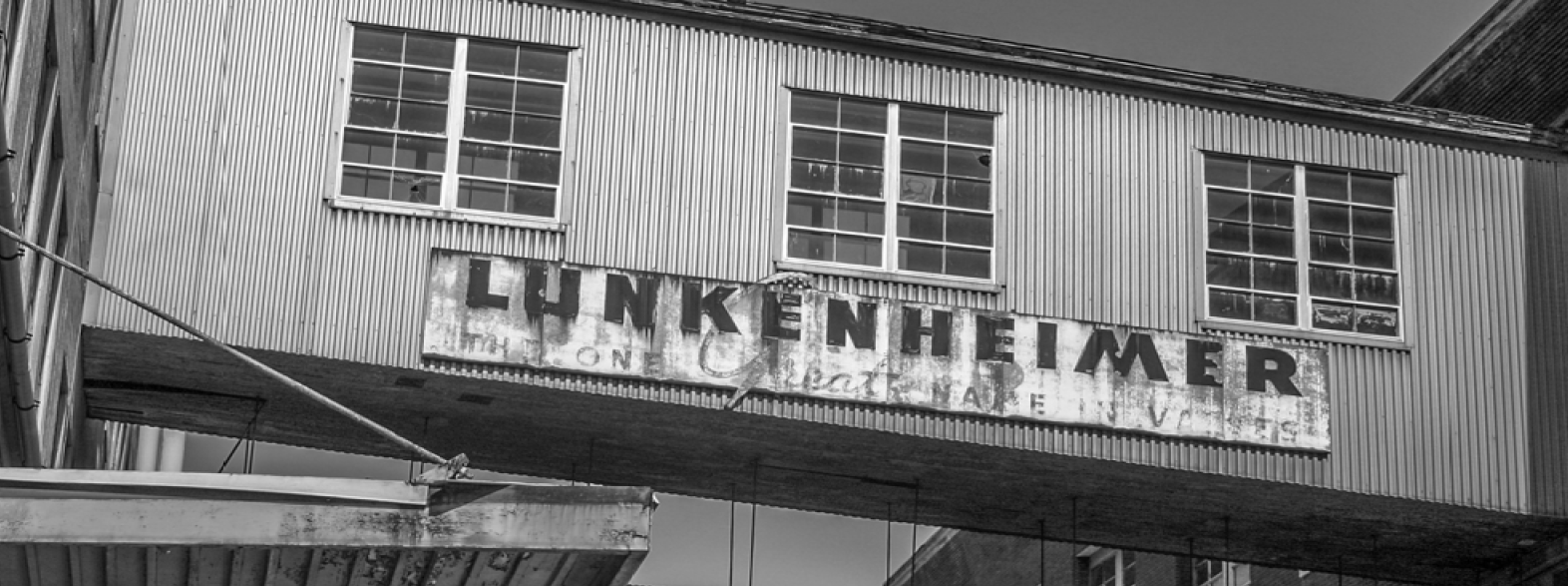
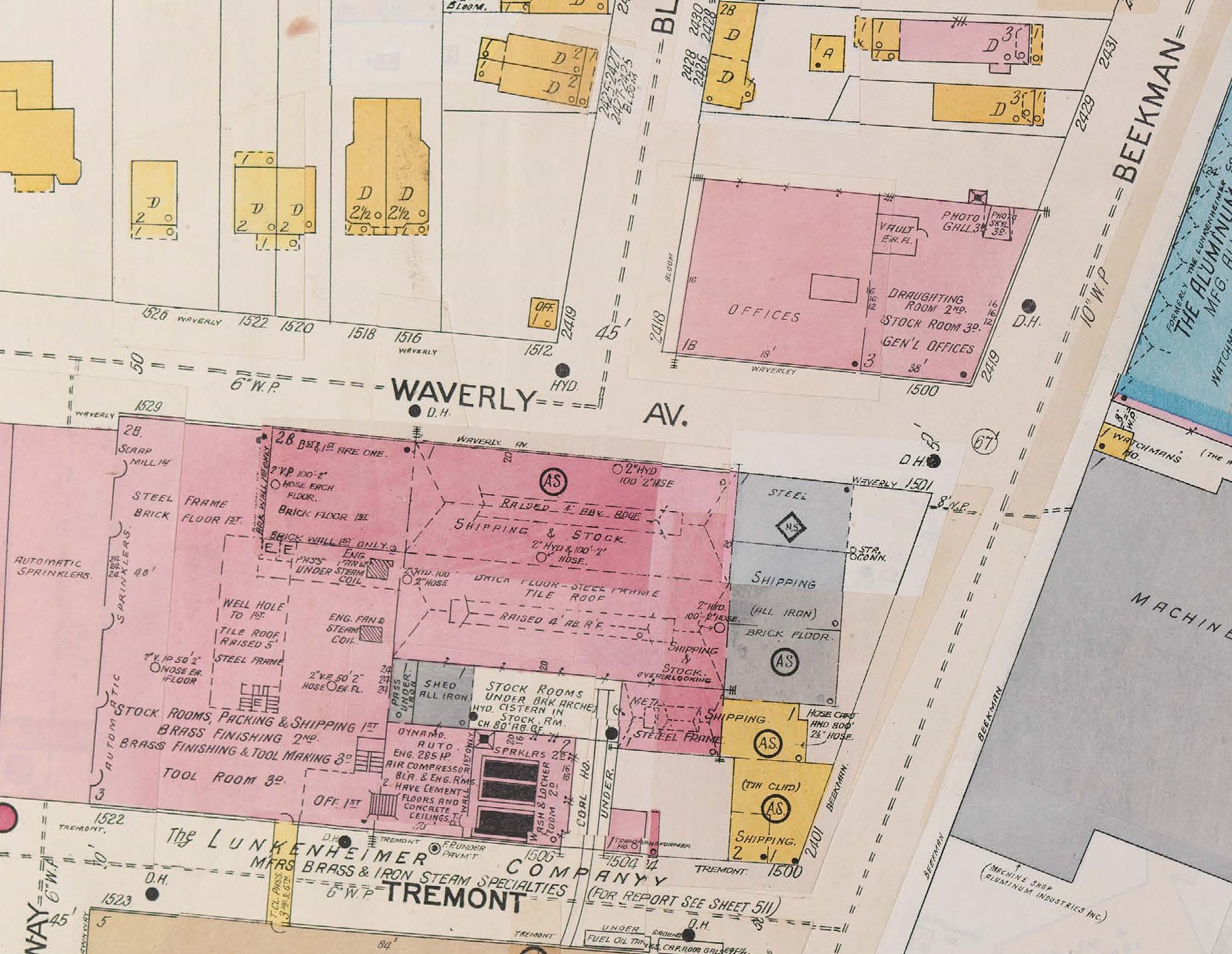
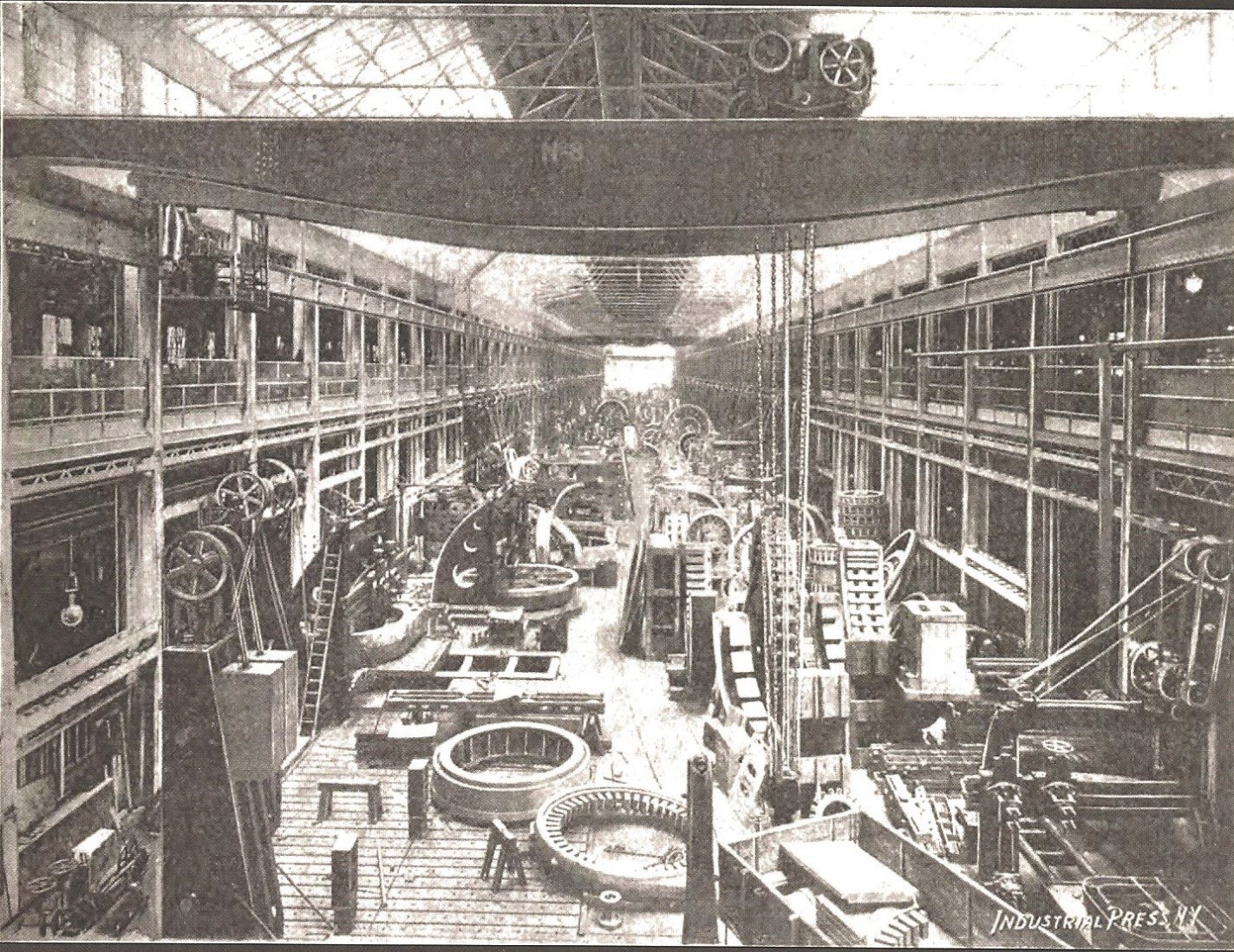
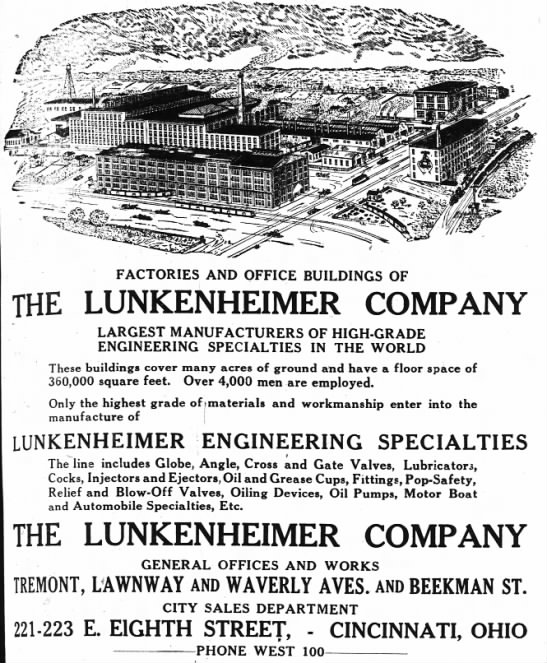
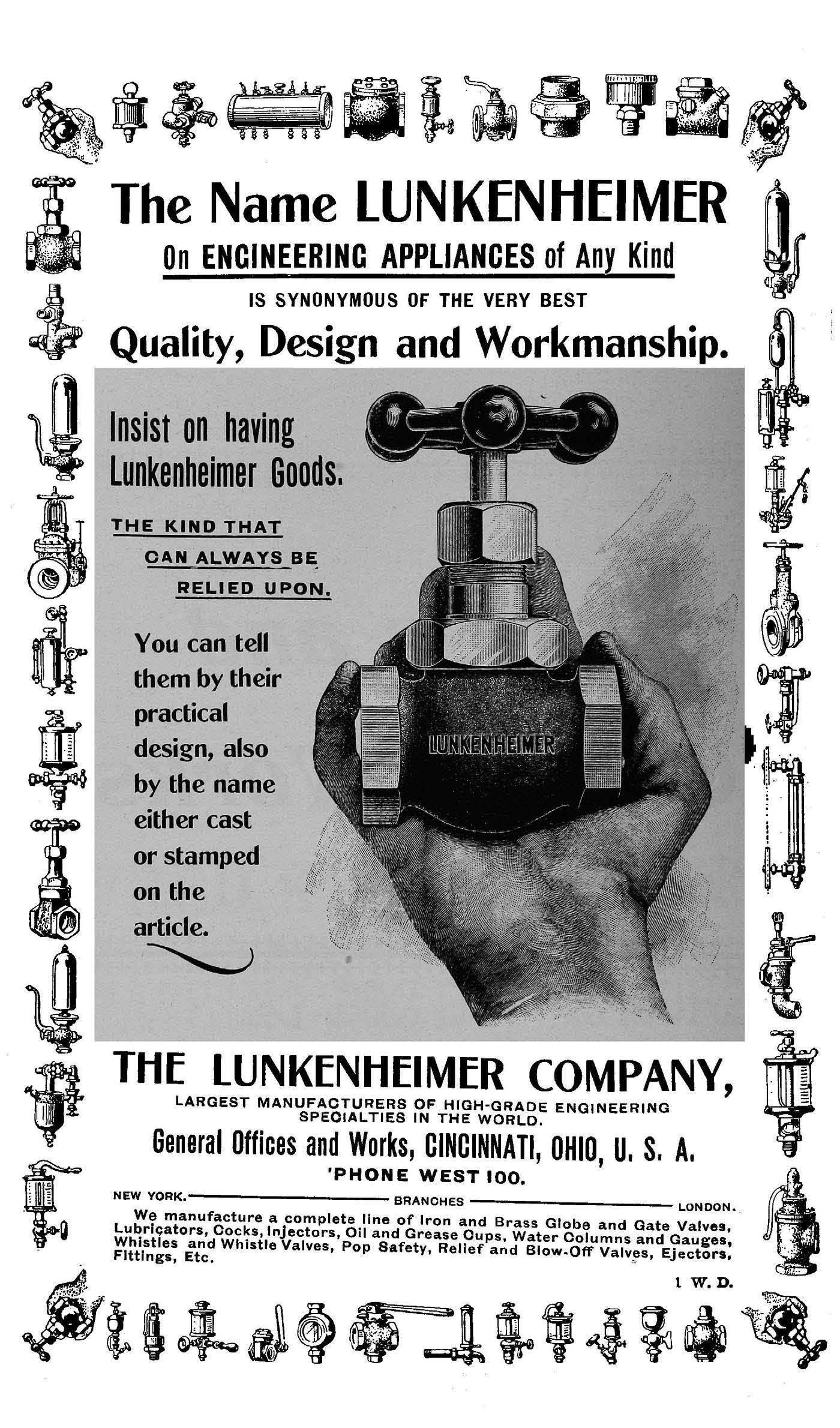
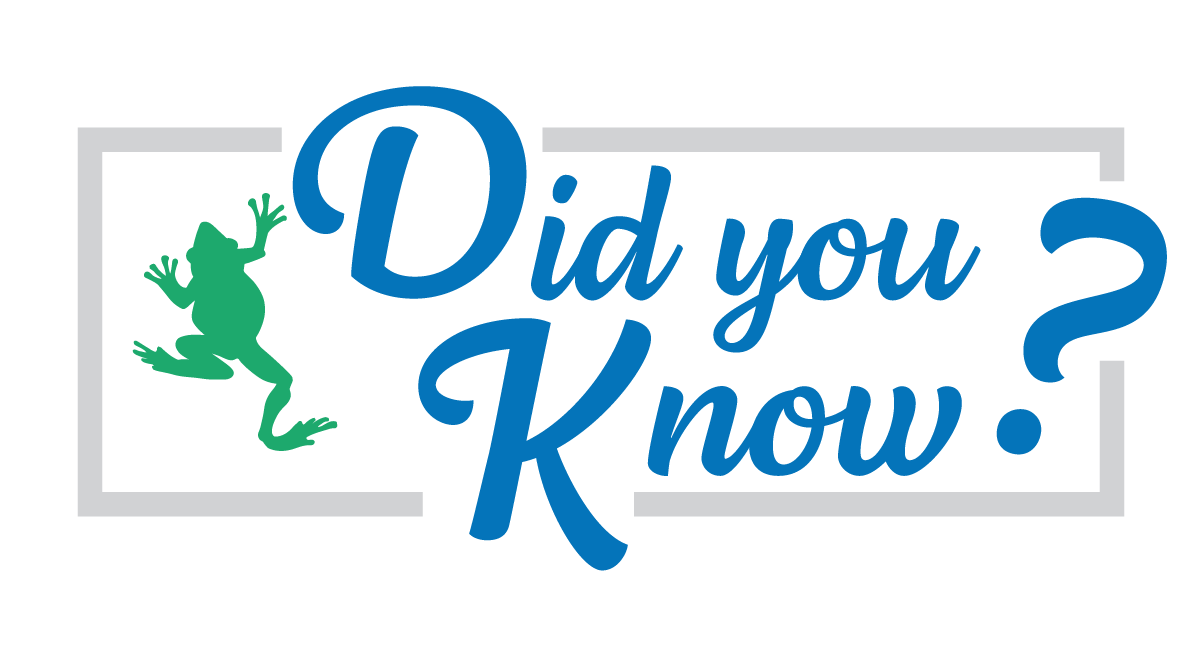
- The Lunkenheimer Valve Company produced parts for Charles Lindbergh’s plane, the Spirit of St. Louis.
- The five-story Lunkenheimer Building is said to be the first industrial concrete building constructed in Cincinnati.
Voices from the Community
Phil Sabatelli on the Lunkenheimer Valve Company:
TRAIL LOCATION Q: MANSION TURNED HOSPITAL
The northeast corner of Queen City and Harrison avenues during the early days of South Fairmount (known as Fairmount until the 1920s) was extremely different than the landscape today. At this location, there once stood the Ames Mansion, an imposing multi-story brick residence built in the early 1800s.
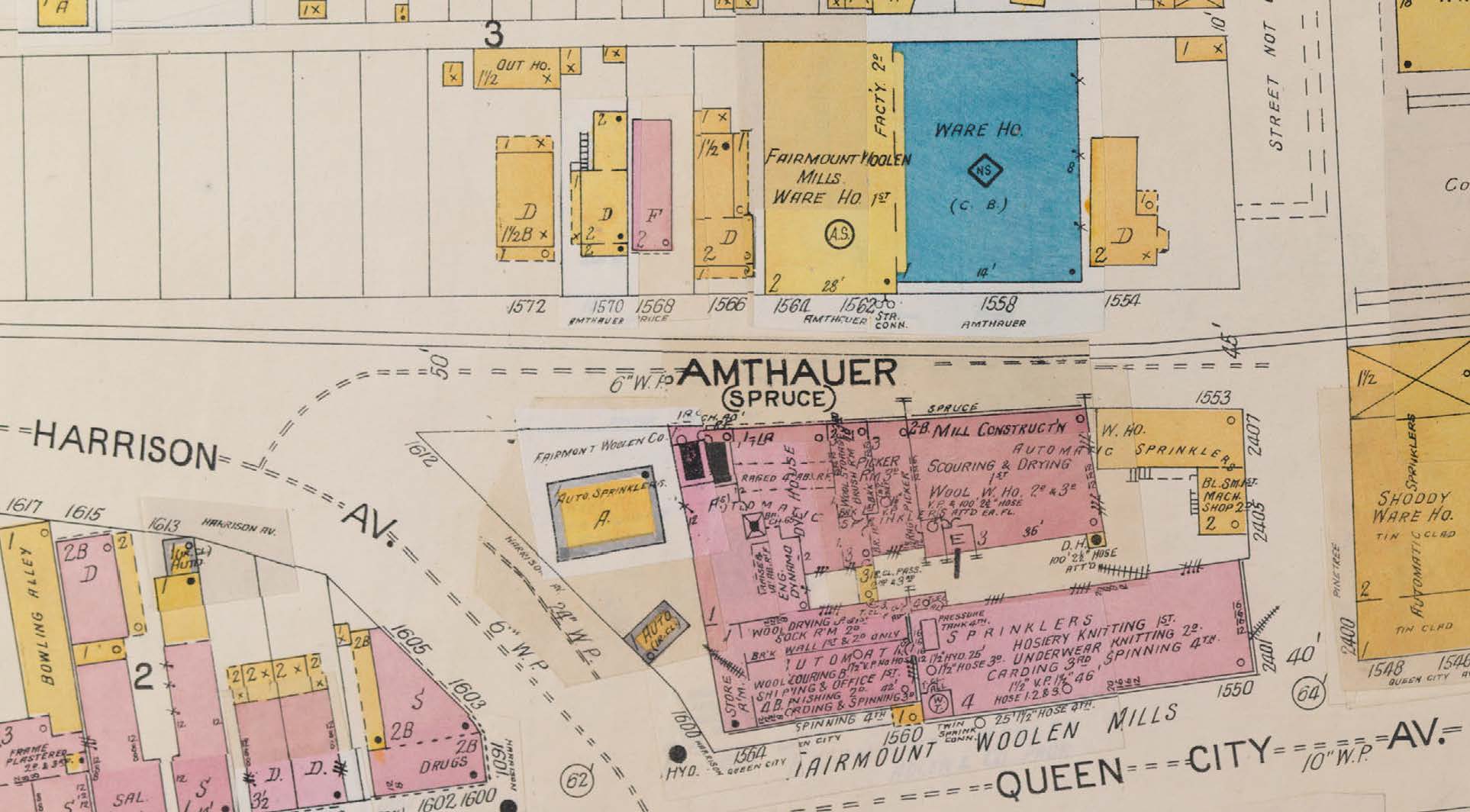
At the time, Fairmount’s residents and buildings were sparsely located. The quiet and isolated nature of the area made it attractive to hospital administrators who leased the Ames Mansion and established it as Cincinnati’s first hospital for the mentally ill.
The Lick Run Insane Asylum, which operated out of the Ames Mansion between 1853 and 1865, alleviated the problem of overcrowding at other city hospitals. Ultimately, patient demand outgrew the space, and the asylum was replaced by the Longview Hospital, located in Millcreek Township near Carthage.
In 1865, soon after the Asylum relocated, Bernard Adler, a German immigrant and weaver by trade, purchased the Ames Mansion and turned it into the Fairmount Woolen Mills. At the time, Fairmount was entering its first wave of industrial growth, and the Adler mill was one of the first industries in this part of the neighborhood.
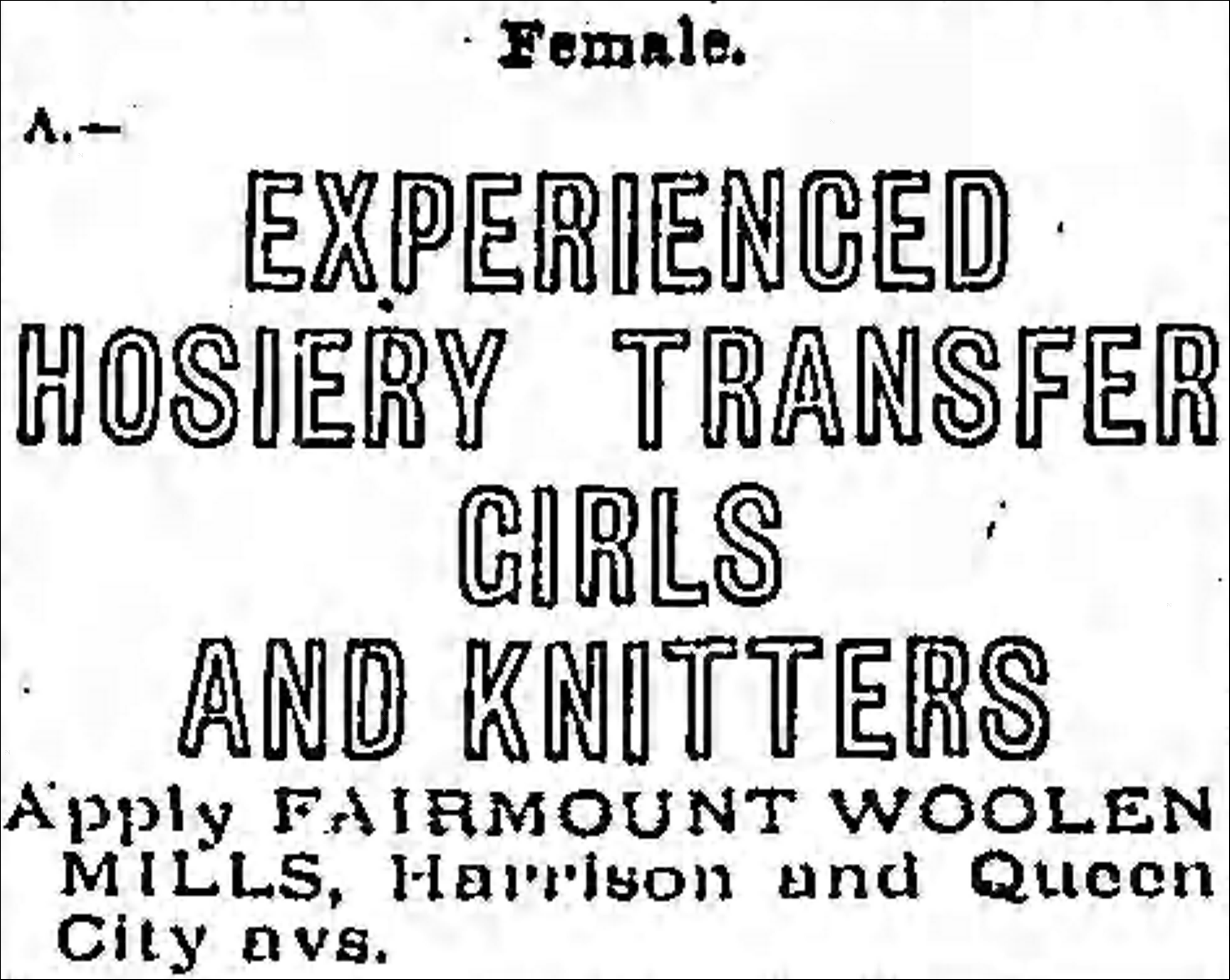
The Fairmount Woolen Mills operated continuously at the Ames Mansion location for decades and was owned and administered by multiple generations of the Adler family. By the late 19th century, the company adopted the name Adler Underwear & Hosiery Manufacturing Company and constructed a large, four-story brick building in place of the Ames Mansion. During World War I, the company developed stockinette tubing for meat packing, and by the mid-20th century became the largest seller of athletic socks in the country. The company moved to a new location on Beekman Street in 1955. In 1964, nearly a century after Bernard Adler started Fairmount Woolen Mills, the business was sold and moved out of Cincinnati. Although the buildings no longer remain, their histories offer a glimpse into the industrial surge of Fairmount in the late 19th century.
TRAIL LOCATION R: CURLED HAIR FACTORY
Formerly located south of Queen City Avenue and west of Quebec Road, A. D. Bullock & Company began as a small “curled hair” factory in the 1840s. The company operated as wool dealers and commission merchants, in addition to curled hair processing.
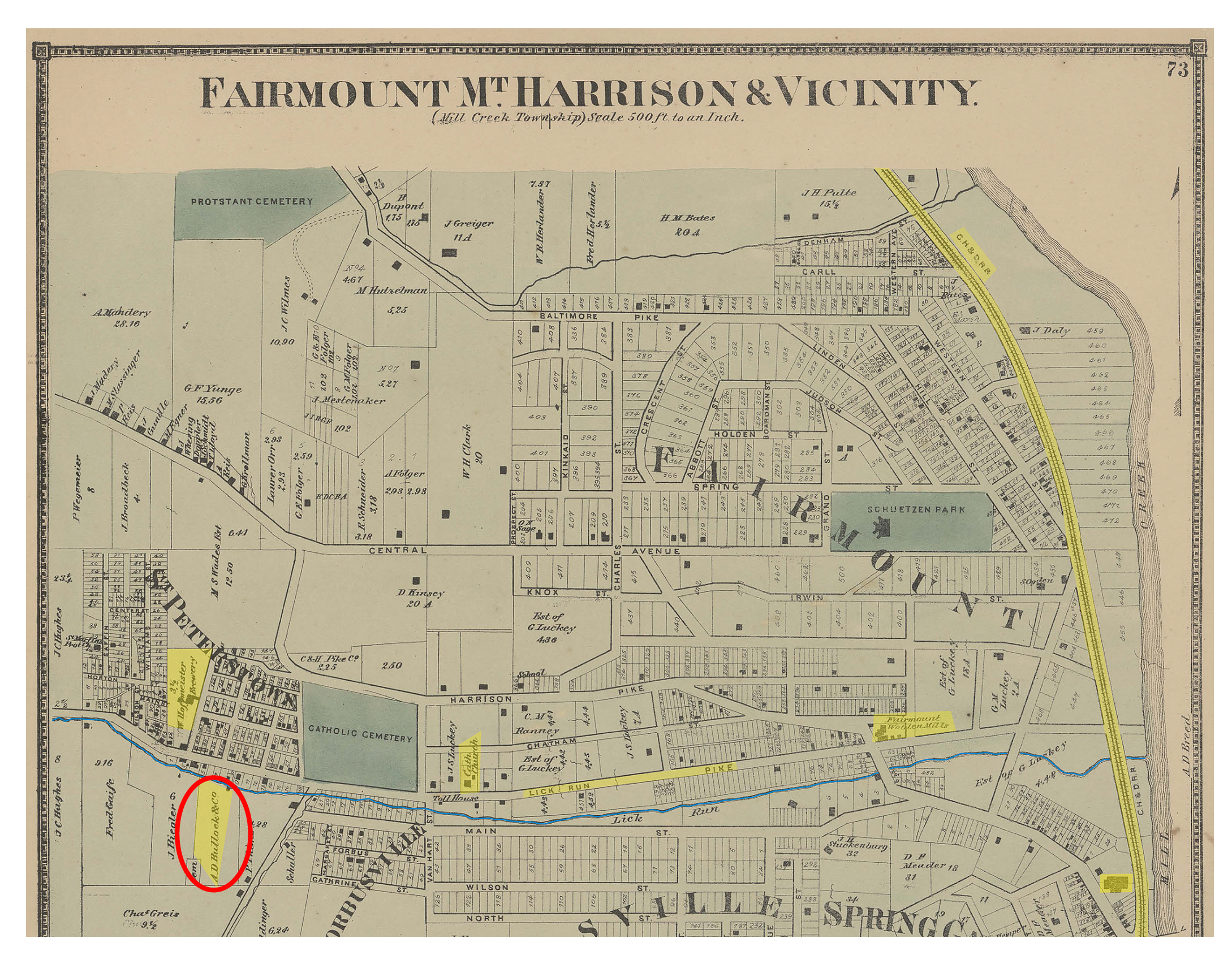
In 1893, Pearson R. Mitchell, an employee in the company, purchased the business and renamed it the P. R. Mitchell Company. Under new management, it continued to expand and, by 1912, occupied more than five acres with multiple buildings. The company complex included buildings for a bristle shop, wash and dye tanks, offices, stock rooms, and spaces for sorting, drawing, drying, pressing, and storing curled hair.
The company also operated a feather and down plant used to make pillows at Harrison and Spring Groves avenues.
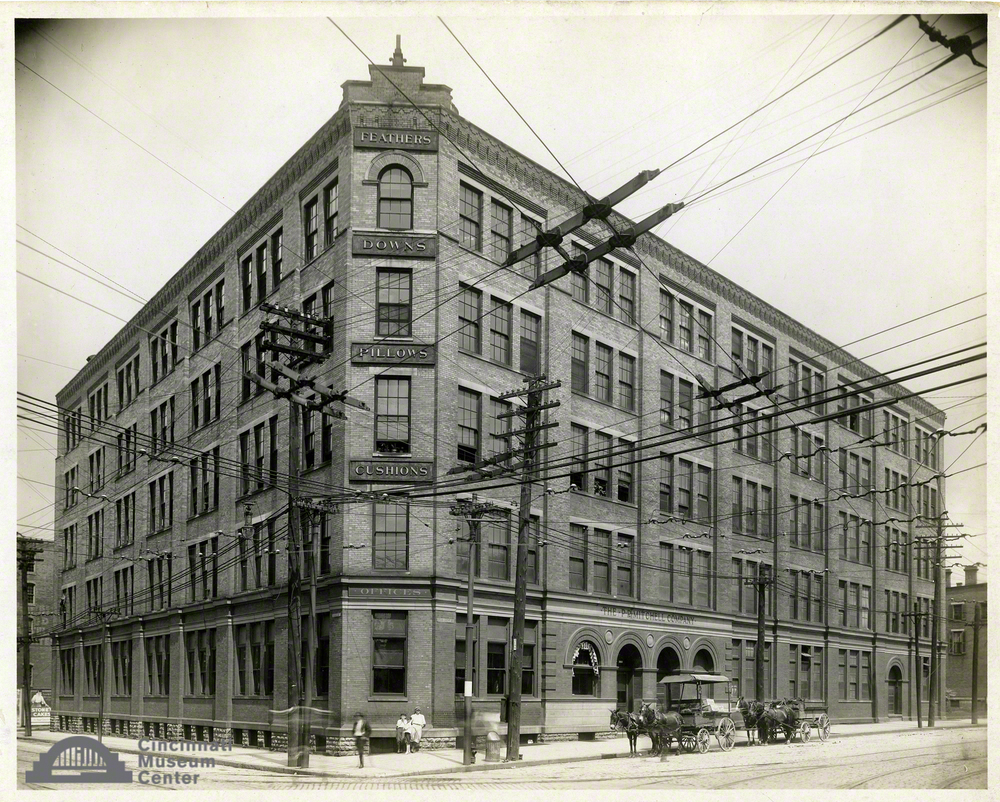
Joseph F. Bohnert took ownership of the complex in the mid-1930s and produced curled hair and upholstery products for 10 more years before permanently closing.
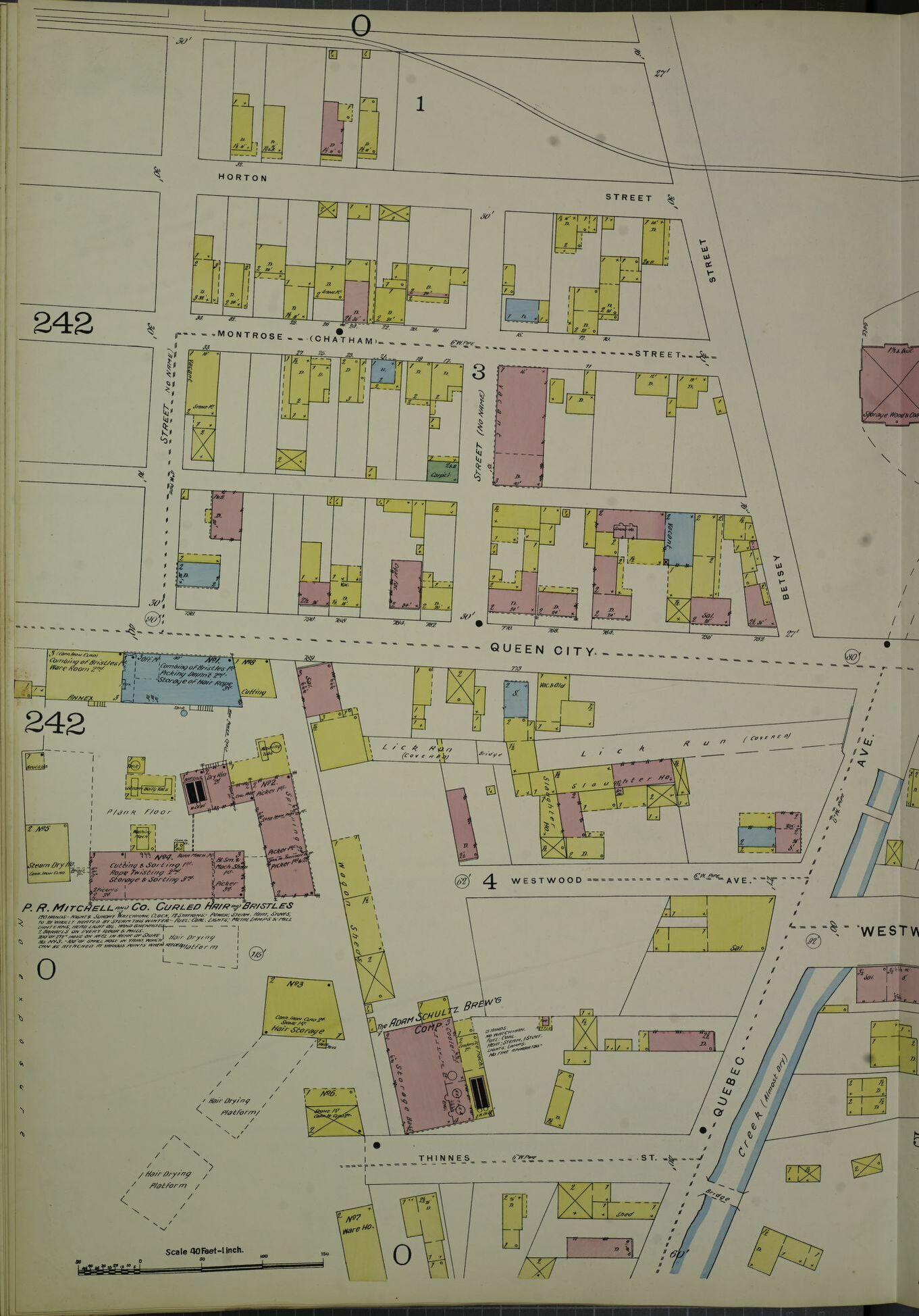
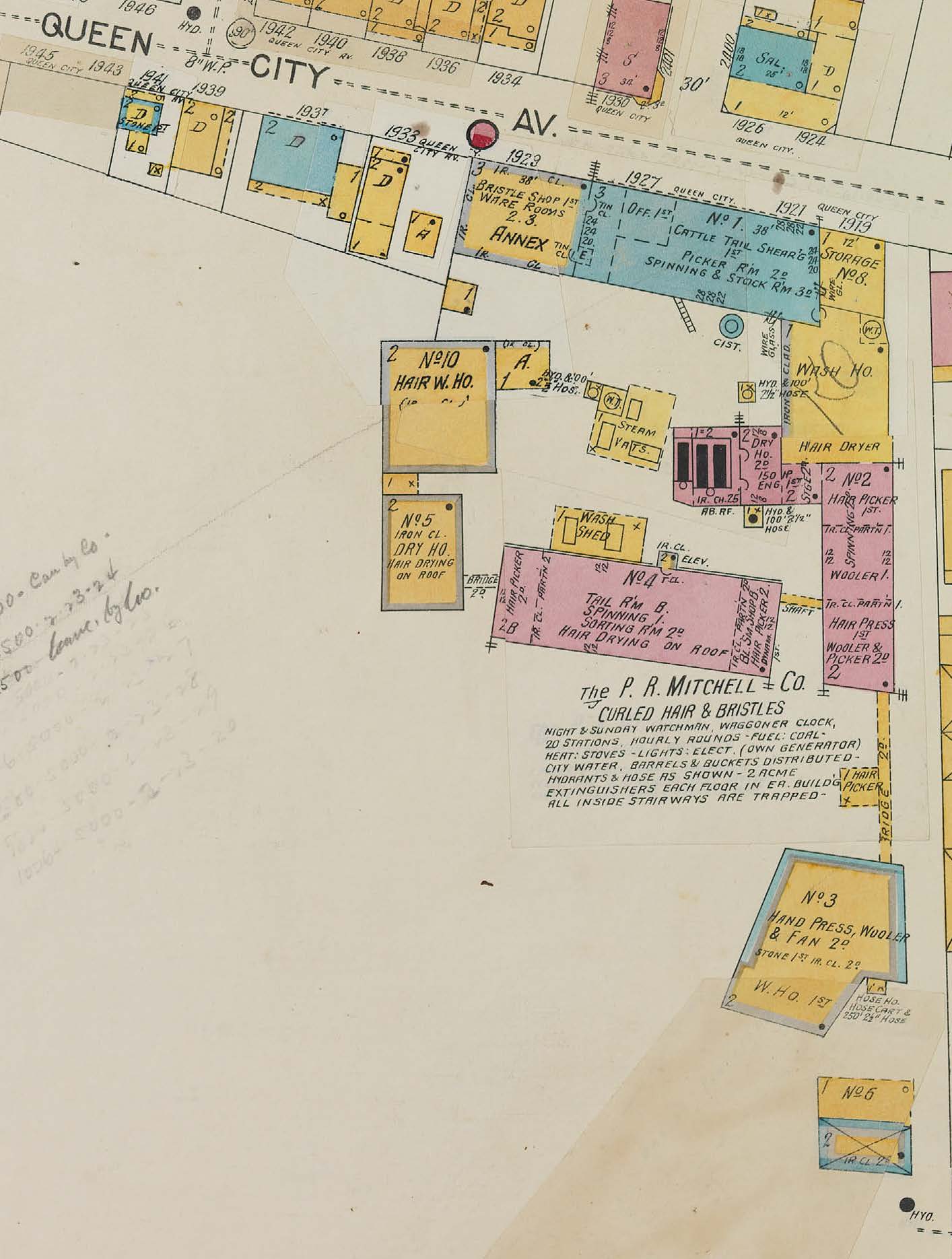
What is Curled Hair?
Curled hair is the hair and bristles pulled from hogs and used for stuffing mattresses and making hair brushes, among other products. By 1859, A. D. Bullock & Company was one of two curled hair factories in Cincinnati using the hair and bristles from the more than 350,000 hogs sold during that year in “Porkopolis.” Hog bristles continue to be used to this day in hair brushes.
The “curled hair” industry in Cincinnati is directly linked to the city’s history as one of the major pork-processing centers in the United States during the 19th century. The abundance of hogs in the region made it natural for companies like P. R. Mitchell’s to establish bristle and curled hair factories.
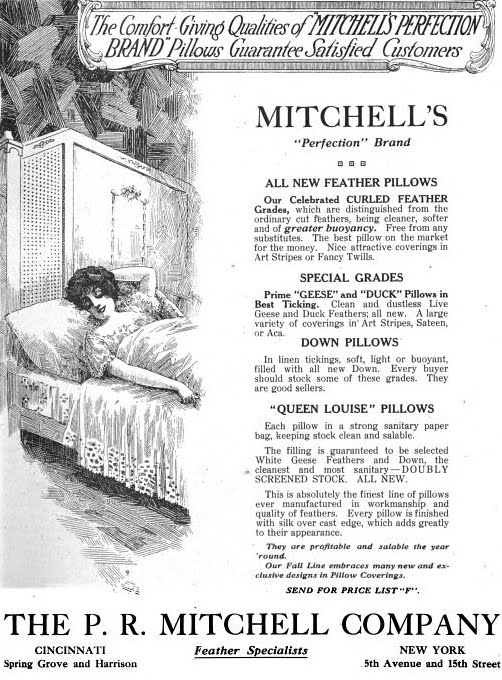
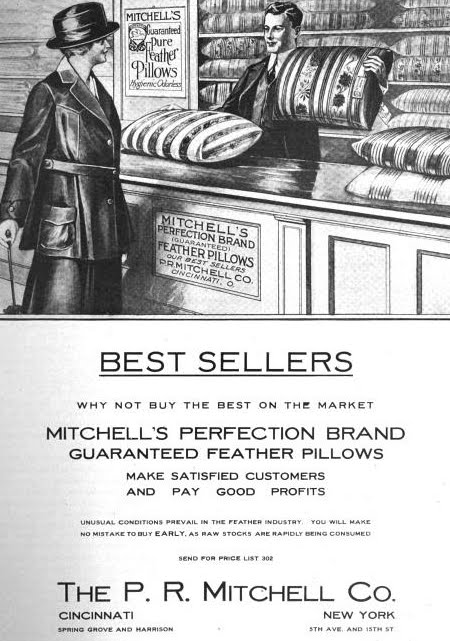

- Over the past 200 years, furniture makers have used everything from straw,coconut fiber, moss, and horse or hog hair to stuff furniture items.
Voices from the Community
Buddy LaRosa, founder of LaRosa's Pizzeria, on the P.R. Mitchell Company:
TRAIL LOCATION S: SOUTH FAIRMOUNT DAIRIES
During the 19th century, South Fairmount (which was called Fairmount until the 1920s) was the home of numerous dairy farms, concentrated primarily south of Westwood Avenue, near Clara Street, Selim Avenue, and Amor Place. The number of small, family-owned dairies increased throughout the latter half of the 19th century and, by 1890, almost all the dairies that provided milk to Cincinnati and its surrounding neighborhoods were located near the Mill Creek watershed.
Joseph Niehoff, a German immigrant who arrived in Cincinnati in 1875, opened the Niehoff Dairy in 1883 in Fairmount. Niehoff previously worked as a wagon driver for his brother’s dairy before opening his own at 1651 Queen City Avenue. His farm complex included the main farmhouse, a cow barn, and other small outbuildings. In 1894, Niehoff purchased another dairy near Clara Street and Northside Avenue and moved the dairy business to that location.

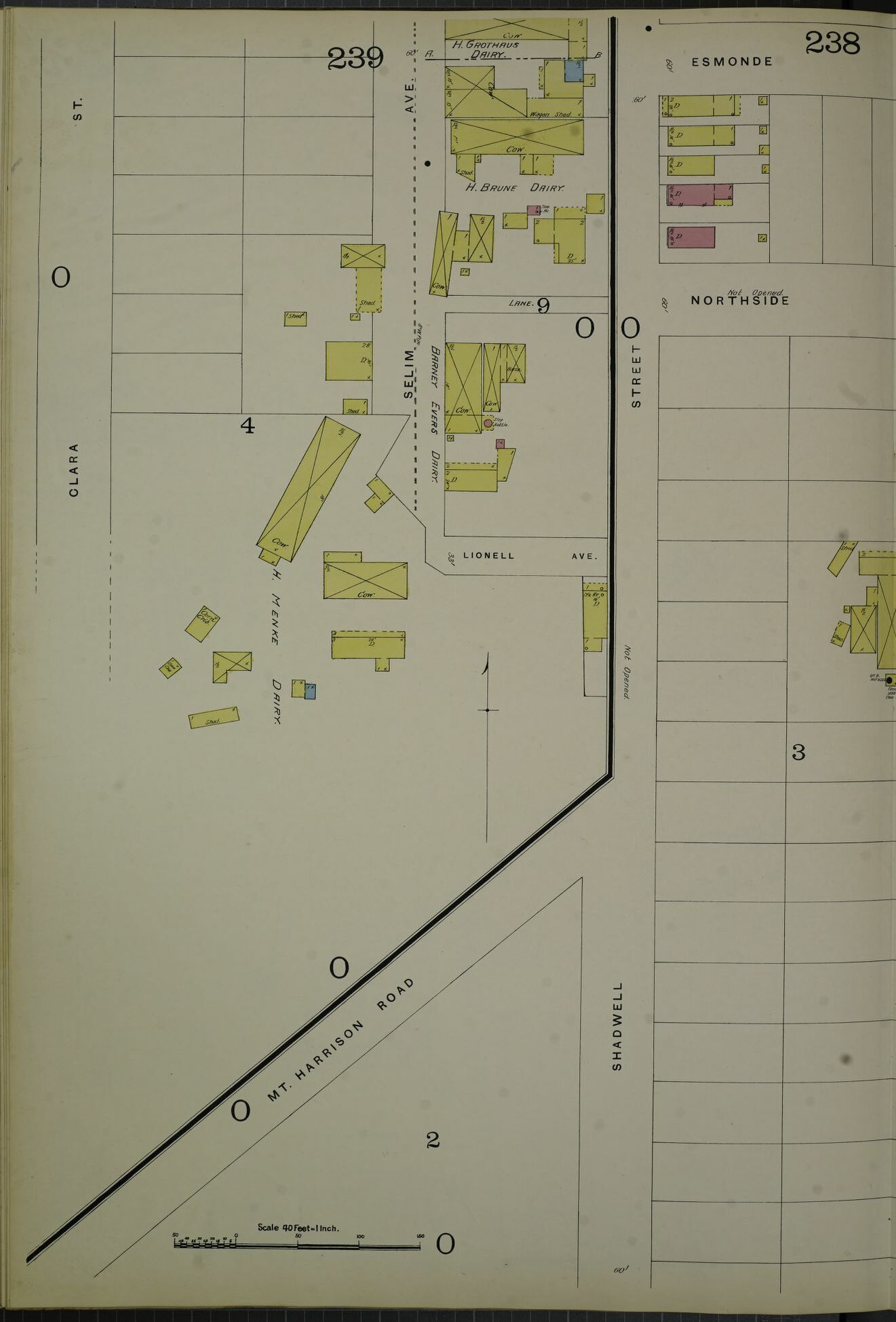
Industrial Growth and Water Safety Concerns
Industrial crowding in the Mill Creek watershed during the late 19th and early 20th centuries due to dairies, industries, and hospitals became a public health concern for many physicians. They recognized the Mill Creek was polluted and were concerned about dairy cows drinking the water and producing spoiled milk. Measures to clean up the creek began in the early decades of the 20th century but, by then, most of the dairies in the area had already closed.


- Some of today’s eco-friendly microbreweries have something in common with their 19th century counterparts—they’re also in the dairy business!
- Leftover grains from the brewing process can be used to feed livestock, and it’s a great way for breweries to get rid of what amounts to over 80% of the waste produced from the brewing process.
- While modern breweries donate or sell the leftover product, some of Cincinnati’s first breweries had cows at, or near, the breweries and sold their milk to the public.